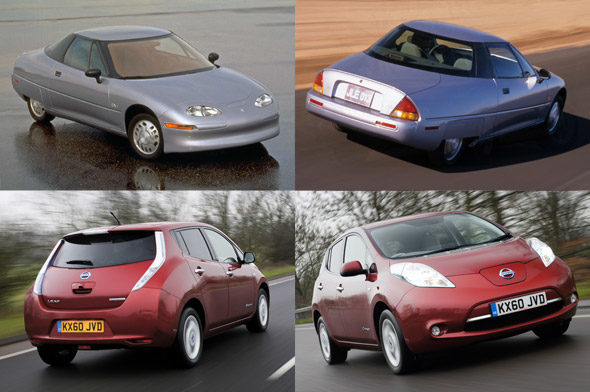 Electric cars, to many, appear a truly modern innovation – one enabled by rapid advances in battery technology, motors, controllers and thermal management systems.
Electric cars, to many, appear a truly modern innovation – one enabled by rapid advances in battery technology, motors, controllers and thermal management systems.
The reality is, though, that electric cars have been around for longer than most would realise. For example, in the late 1800s and early 1900s, electric cars were comparatively common. They were popular, too, thanks to their quiet, clean and straightforward nature.
Nowadays, if you collar a passer-by, it’d be surprising if they could name more than one manufacturer of electric cars. In many cases, it’ll be the imperious Tesla that they recall; not unjustly so, mind, given that Tesla has showcased to the wider world what’s possible with electric power.
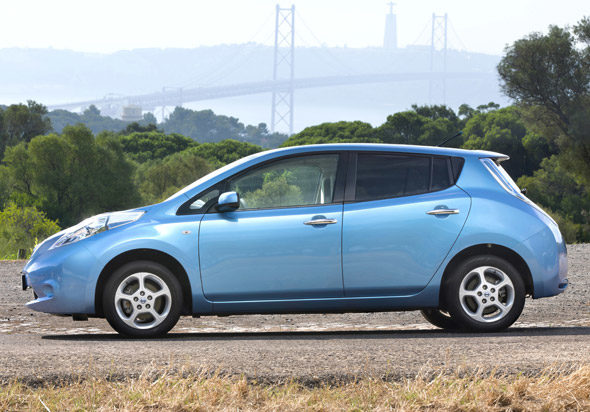 However, some two years before Tesla began building its electric rulebook-rewriting Model S, an even more important electric car started rolling off production lines – the Nissan Leaf (pictured above). Here, for the first time in modern history, was an affordable and practical electric car.
However, some two years before Tesla began building its electric rulebook-rewriting Model S, an even more important electric car started rolling off production lines – the Nissan Leaf (pictured above). Here, for the first time in modern history, was an affordable and practical electric car.
It had five doors, a claimed range of 109 miles and it cost £23,350 after government grants. The 1,525kg hatchback wasn’t intolerably slow, either; its electric motor put out 107bhp and the Leaf could accelerate from 0-62mph in a reasonable 11.9sec.
The electric Nissan subsequently received many entirely deserved accolades. That said, its basic specifications were not that different from a car that arrived 14 years earlier – the General Motors EV1.
THE GM EV1: DECADES AHEAD OF THE COMPETITION
The EV1, which was the first mass-produced modern electric car, was introduced in 1996 to help GM tackle increasingly stringent emission regulations and develop a profitable electric vehicle market. It was packed with advanced features and concepts, too, in a further effort to grab attention.
Key highlights included an efficient low-drag design and aluminium underpinnings clad in composite panels; all in, it weighed around 1,350kg. Its single motor, which drove the front wheels, produced 137bhp and aided the EV1 in sprinting from 0-62mph in less than nine seconds.
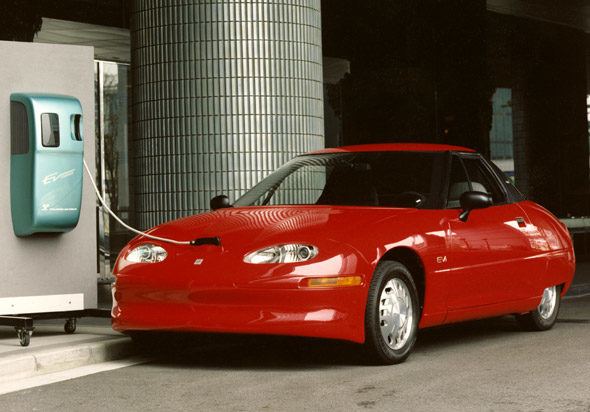 Its battery pack initially granted a range of 60 miles but upgrades eventually upped that to a claimed 160 miles. Many later trials, at any rate, found it possible to average around 100 miles. Charging would also take as little as three hours, helping to minimise downtime. On paper alone, lack of rear seats aside, the EV1 still measures up to the 2010 Leaf well – and even betters the Nissan in some cases.
Its battery pack initially granted a range of 60 miles but upgrades eventually upped that to a claimed 160 miles. Many later trials, at any rate, found it possible to average around 100 miles. Charging would also take as little as three hours, helping to minimise downtime. On paper alone, lack of rear seats aside, the EV1 still measures up to the 2010 Leaf well – and even betters the Nissan in some cases.
Its equipment levels and engineering were also remarkable; the EV1 had a kit list that included climate control, cruise control, an advanced anti-lock regenerative braking system, an electrically heated windscreen, tyre pressure monitoring and a durable inductive charging system.
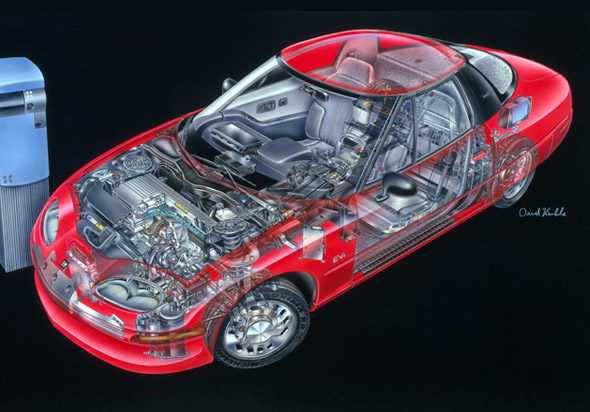 THE MULTI-MILLION DOLLAR FAILURE THAT POINTED THE WAY
THE MULTI-MILLION DOLLAR FAILURE THAT POINTED THE WAY
Unsurprisingly, there was a hefty price to pay for such an advanced, forward-thinking car. At the time, the EV1 was leased on a monthly rate based on a purchase price of $33,995. Years later, one GM executive would claim that each cost $250,000 to build – around £150,000, or a staggering £270,000 today.
Even if that figure was inflated, the EV1 was clearly not going to be a sustainable or profitable exercise. The market just wasn’t there, either, despite GM spending millions on incentives and marketing campaigns.
As a result, only 800 cars were leased over a four-year period. This low volume caused many parts suppliers to wind up EV1-related production which, in conjunction with myriad other factors, caused GM even more problems.
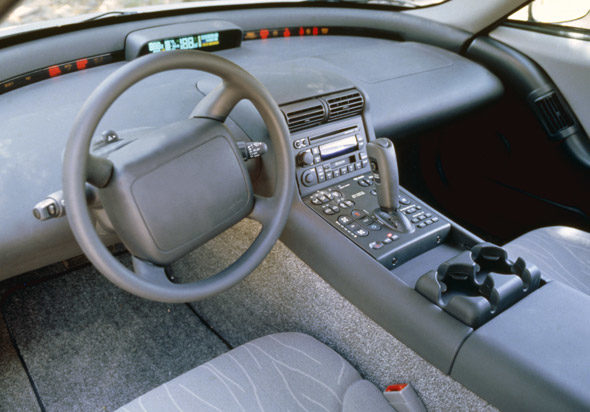
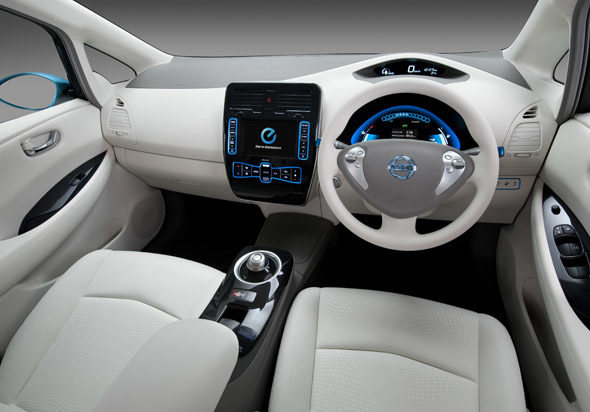 Consequently, after GM had spent a total of $1 billion, the entire programme was wound up in 2002. Much to the dismay of many, when the leases ended, the vast majority of EV1s were gathered up and crushed. Primarily, this allowed GM to avoid the legal and costly requirement of supporting them for the next 15 years. The irony is that, had GM stuck with it, it would probably now be leading the way in what is rapidly becoming the most important sector of the new car market.
Consequently, after GM had spent a total of $1 billion, the entire programme was wound up in 2002. Much to the dismay of many, when the leases ended, the vast majority of EV1s were gathered up and crushed. Primarily, this allowed GM to avoid the legal and costly requirement of supporting them for the next 15 years. The irony is that, had GM stuck with it, it would probably now be leading the way in what is rapidly becoming the most important sector of the new car market.
That aside, and the sad and wasteful end to such a fine machine, much good came from the EV1. Its advanced technology and design paved the way for subsequent electric cars, with falling costs ultimately making the likes of the Leaf a viable proposition – and it also gave the modern world its first glimpse of how capable electric cars could really be.
See examples of the Nissan Leaf for sale on CarGurus
READ MORE ON THE CARGURUS BLOG
- Automotive Reincarnations: Lotus Elise SC and Alpine A110
- Automotive Reincarnations: Audi A2 and BMW i3
- Automotive Reincarnations: Jensen Interceptor FF and Bentley Continental GT
In the market for a used car? CarGurus makes it easy to find great deals from top-rated dealers. CarGurus compares price, detailed vehicle data and dealer reviews to give each used car a deal rating from great to overpriced, and sorts the best deals first. Find out more and begin your used car search at CarGurus
The content above is for informational purposes only and should be independently verified. Please see our Terms of Use for more details.
from The CarGurus Blog http://bit.ly/2SKzhHF
Comments
Post a Comment